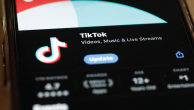
Six years ago, about as many people said they regularly watched one of the nightly network news broadcasts as said they regularly watched a cable news channel. But in subsequent news consumption surveys, cable news has steadily increased its advantage over the nightly network news. In the current survey, 39% of the public reports watching cable news channels such as CNN, MSNBC or the Fox News Channel regularly, while 29% say they regularly watch one of the big three nightly network news broadcasts.
Local television news remains more popular than either cable news or network news – 52% regularly watch the local news about their own viewing area. However, as with network news viewership, the percentage watching local TV news has fallen steadily in recent years. In 1998, nearly two-thirds of the public (64%) regularly watched their local TV news.
TV News Outlets Maintaining Audiences
Roughly a quarter of the public (24%) regularly watches CNN and about an equal percentage (23%) regularly watches the Fox News Channel. These numbers are basically unchanged from two years ago. The percentage watching MSNBC has increased marginally since 2006 but has nearly doubled over the past 10 years; today, 15% of Americans watch MSNBC regularly. CNBC is viewed regularly by 12% of the public.

Equal proportions (14%) say they watch either the NBC Nightly News or ABC’s World News Tonight. The audience for the CBS Evening News is significantly smaller (8%) and has decreased by more than half in recent years. In 2002, 18% regularly watched CBS’s nightly newscast. While the percentage watching ABC and NBC has fallen over that same time period, the decline has not been nearly as dramatic.
Viewership of the network morning shows has remained very stable in recent years: currently 22% report regularly watching the Today Show, Good Morning America or the Early Show. The Sunday morning news shows such as Meet the Press, This Week and Face the Nation have also maintained a steady audience. Currently 13% regularly watch one or more of these programs, which is largely unchanged from 2006 and 2004.
Cable Audience Younger, Better Educated

Not only is the cable news audience larger than the network news audience, it also is younger, more educated and more knowledgeable about current events. Only 21% of those younger than 30 regularly watch a nightly network news show, compared with 36% who regularly watch a cable news channel. Men are much more likely than women to watch cable news, and among men under age 30, fully 42% regularly watch cable news. That compares with 29% of women younger than 30.
More than four-in-ten college graduates (45%) watch cable news regularly, compared with only 28% who watch the network news. And more than half (55%) of those who are highly knowledgeable about current events watch cable news. Only 28% of this highly knowledgeable group watches network news regularly.
Another area where the cable and network news audiences differ is in their political orientation. Democrats are more likely than Republicans to regularly tune into nightly network news shows, while similar numbers of Republicans and Democrats regularly watch cable TV news. However, not all cable audiences are alike, and there have been changes in the partisan profile of the various cable news networks just in past two years.
News Audiences More Democratic

The general public has become more Democratic since 2006, and this is reflected in the audiences for leading TV news outlets. The audiences for CNN and MSNBC, which were heavily Democratic two years ago, have become even more so: fully 51% of CNN’s regular viewers are Democrats while only 18% are Republicans. MSNBC’s audience makeup is similar – 45% of regular viewers of MSNBC are Democrats, 18% are Republicans.
The regular audience for nightly network news also is now about two-to-one Democratic (45% vs. 22% Republican). In 2006, 40% of the regular viewers of nightly network news were Democrats compared with 28% who were Republicans.
The regular audience for the Fox News Channel continues to include more Republicans than Democrats. Currently, 39% of regular Fox News viewers are Republicans while 33% are Democrats; in 2006, the margin was 38% to 31%.
Talk Shows and Ideology
In addition to providing round-the-clock news coverage, the major cable news networks feature a range of talk shows that focus on politics and current events. The talk show hosts, rather than the networks, generally set the tone for these programs, and the audiences tend to be much more ideologically polarized than the public at large.
Rush Limbaugh’s radio show has the most conservative audience, among the eight talk shows included in the survey. Some 5% of the public listens to Limbaugh’s show regularly and another 9% listen some of the time. Among Limbaugh’s regular listeners, 80% describe their political views as conservative. Just 7% say they are political moderates and 10% are liberals. By contrast, the general public is 35% conservative, 35% moderate and 20% liberal.

Two Fox News Channel talk shows, Hannity & Colmes and The O’Reilly Factor, also have highly conservative audiences. Hannity & Colmes is viewed regularly by 7% of the public; among the show’s regular viewers, 68% describe themselves as politically conservative. The O’Reilly Factor with Bill O’Reilly is the most widely viewed talk show included in the poll: 10% of the public watches this show regularly and another 19% watch sometimes. Roughly two-thirds of O’Reilly’s regular viewers are conservatives, while a mere 3% describe themselves as liberals.
The audiences for Lou Dobbs Tonight, Hardball with Chris Matthews and Larry King Live are more in line with the public ideologically. Dobbs’ audience is slightly more conservative than the general public, while Matthews’ and King’s audiences are slightly more liberal. Of the three, Larry King has the largest audience – 27% tune into Larry King Live at least sometimes.
Regular viewers of The Colbert Report with Stephen Colbert and The Daily Show with Jon Stewart are much more liberal than the public at large. More than a third of Colbert’s regular viewers (36%) describe their political views as liberal and 45% of regular Daily Show viewers say they are liberal. The audiences for these two shows are roughly equal in size; 19% watch The Colbert Report regularly or sometimes while 23% watch The Daily Show.
Despite the ideological bent of many of these talk show audiences, majorities of the shows’ viewers say they prefer to get political news from sources that don’t have a particular political point of view rather than sources that share their point of view. Rush Limbaugh’s regular listeners are among the most likely to say they prefer sources that share their point of view – 37% express this view while 53% say they prefer news sources that don’t have a particular point of view. Similarly, 37% of Larry King’s regular audience prefers sources that share their political views. Stephen Colbert’s viewers are among the least likely to seek out sources that reflect their political views. Only 15% of regular viewers of The Colbert Report say they prefer news sources that share their point of view, while 79% say they prefer sources without a political point of view.
Colbert and Stewart Attract Young Viewers

The audiences for radio and cable talk shows tend to be dominated by older Americans, with two notable exceptions – the Colbert Report and the Daily Show. Fully 43% of Colbert’s regular viewers are younger than 30, as are 42% of Stewart’s regular viewers. That is roughly double the proportion of people younger than 30 in the general public (21%).
The audiences for Larry King and Rush Limbaugh are more representative of the population at large, though still slightly older than the average. Slightly less than a quarter of their regular viewers are younger than 30, and about the same percentage are 65 or older. Lou Dobbs has the oldest audience, among the shows included in the survey. About three-in-ten (31%) regular viewers of Dobb’s program are 65 or older, about twice the proportion in the general public (16%). Among regular viewers of O’Reilly, Hannity & Colmes, and Hardball, older viewers outweigh younger ones by a significant margin.
Newspapers Down, Online Papers Show Promise

This year for the first time in roughly 15 years of asking the question, fewer than half of all Americans report reading a daily newspaper on a regular basis. Only 46% say they read the paper regularly – this number is down from 52% in 2006 and was as high as 71% in 1992. In a similar vein, fewer now report having read a newspaper “yesterday,” a more reliable measure of newspaper readership. Only 34% say they read a newspaper yesterday, down from 40% in 2006.
The falloff in readership over the past two years has occurred across the board – men and women, whites and blacks, college graduates and those who never attended college are all reading the newspaper at lower rates than in 2006. Age continues to be strongly correlated with newspaper readership. Young people are much less likely than their older counterparts to read a daily newspaper. Currently, only 15% of those younger than 25 report having read a newspaper yesterday. Among those ages 25 to 34, 24% read a newspaper yesterday. This compares with roughly half (46%) of those 50 and older.

The audience for online newspapers has grown modestly since 2006. In the current survey, 13% say they read the web version of a newspaper yesterday, or both the print and online versions, up from 9% two years ago. Yet that increase has not made up for the steep loss in print readership (from 34% to 25%).
Still, online newspapers are gaining readers, especially among people ages 25 to 34. Among people in this age group who read a newspaper yesterday, fully 16% report having read the paper online; slightly fewer (12%) say they read the paper version. The proportion of this age group reporting it read an online newspaper yesterday has doubled – from 9% in 2006 to 19% in 2008. Even so, total newspaper readership among those ages 25 to 34 has not increased over the past two years.
Community Papers’ Stable Niche

At a time when daily newspapers are losing readers, the audience for local weekly community newspapers has remained relatively stable. Currently, 33% say they read such newspapers regularly, about the same as in 2006 (35%) and 2004 (36%).
Somewhat more women than men say they regularly read weekly community papers (36% vs. 29%). And in contrast with the regular audience for daily newspapers, there are only slight educational differences in the readership for local papers; people with a high school education are almost as likely to be a regular reader of these papers as are college graduates (31% vs. 36%).
As is the case with daily newspapers, however, weekly community newspapers are much more popular with older people than young people. Four-in-ten of those 50 and older say they regularly a community newspaper, double the percentage of those 24 and younger (19%).
Magazines
Readership rates for news magazines, national news publications and magazines such as The New Yorker, The Atlantic and Harper’s Magazine have remained relatively steady in recent years, as newspaper readership has dipped. Currently, 12% of the public regularly reads a news magazine such as Time, U.S. News, or Newsweek. That proportion is down only marginally from 14% in 2006. Young people are as likely as their older counterparts to read these national weeklies.

Personality magazines such as People and Us Weekly are a regular part of the news diet for 8% of the public. Another 22% sometimes read these magazines. The most loyal readers are young women: 23% of women under age 30 regularly read magazines such as People. This compares with only 6% of men in that same age group.
One-in-twenty Americans reads business magazines such as Fortune or Forbes on a regular basis. These magazines appeal mainly to men, college graduates and those with annual incomes of $100,000 or higher. About one-in-five men (22%) in families with annual incomes of $150,000 or more read a business magazine regularly. Men are also more likely than women to read technology magazines such as Wired: 6% of men vs. 1% of women read these types of magazines regularly.
Political Talk Radio

The audience for political talk radio remains more conservative and more Republican than the public at large. Among those who listen to these shows regularly, 44% describe themselves as conservatives, while only 19% consider themselves liberals. Nearly three-in-ten conservative Republicans (28%) regularly listen to radio shows that invite listeners to call in to discuss current events, public issues and politics. This compares with only 17% of the general public. Men are more likely than women to listen to talk radio; men between the ages of 30 and 49 are among the most likely to tune in.
Conservative Republicans also represent the core audience for religious radio shows such as Focus on the Family. While only 6% of the general public listens to religious radio on a regular basis, 14% of conservative Republicans tune in regularly and another 20% listen sometimes. Some 15% of white evangelical Protestants regularly listen to religious radio as do 17% of black Protestants. Among white mainline Protestants, only 3% regularly listen to these types of shows.




